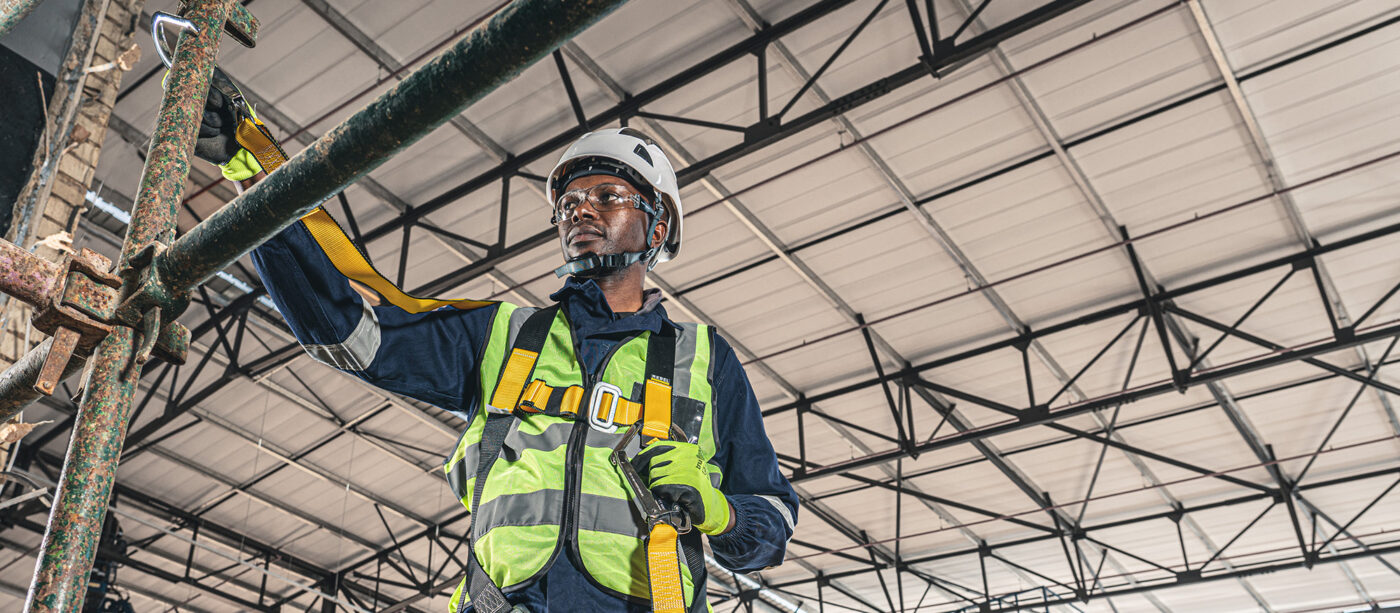Fall Protection, Work at Heights
Introduction to Work at Heights
How not to do it: the Gung-Ho approach
I had a team of workmen repairing the roof of my house, which is built on a slope, so it’s a single storey high on one side, double on the other – high enough for a fall on one side to be life threatening and probably fatal on the other, and that’s not even taking into account that they’d have landed on a slasto-paved walkway or, if they were really unlucky, a rockery.
The contractor is a one-man business who hires staff as he needs them – skilled people, not casuals – but people who, it was soon apparent, have little idea about safety, and care less.
After watching them scampering about where I would never dare to tread, I ordered them down, then went to the nearest PPE store I knew and bought them a harness each (and was given a discount – thank you, Patric of FTS Safety).
The contractor and his team were a bit taken aback, but promised to use them. And when I returned, a while later, five smiling workers stood proudly silhouetted against the skyline, wearing their harnesses, which were attached to…nothing.
I gave up, made them promise to be careful (to much hilarity), crossed my fingers and hoped for the best.
I was lucky: a borer-free roof AND an injury-free workforce. But if any of them had fallen? From any standpoint – ethical, legal, financial – I’d have been in trouble. It wouldn’t have mattered that they were quite happy to take the risk, which they didn’t seem to view as a risk at all. It was ultimately my responsibility.
There’s a lot of planning to be done before anyone can climb anywhere.
This is a topic which is often neglected, ignored and in general only handled when it is too late – Which ends up expensive in more ways thank one.
The subject is one I am quite passionate about and it makes me happy knowing there are people who have no reason to think about or do anything to protect another person’s well being, but do it nonetheless.
Onto the topic at hand. There are many concerns, not only in this example, but industry wide, when it comes to Working at Heights. I believe there are a number of points which need to be brought to light, and I plan a series of articles to tackle the issues step by step.
The starting point
In accordance with the Construction Regulations, CR 10.1, a contractor must – (a) designate a competent person to be responsible for the fall protection plan. The Fall Protection Plan is basically an HSE File focused purely on Work at Heights. It covers everything from the designations (everyone from Fall Arrest Technicians to Incident Investigators), Safe Operating Procedures, Emergency Procedures and all other factors which need to be taken into consideration when working at heights. For the basic domestic situation described above, the Fall Protection Plan would have identified the following important factors:
- Lack of Safe Connecting Points (The Risk Assessment + Site Information)
- Training + Toolbox Talk (Ensure Competency)
- Equipment (Correct/Certified equipment to safely and efficiently perform the job at hand)
- Emergency/Rescue Procedures
- Medicals
There would be other documents regarding incident investigations etc. but the above would have ensured the following:
- Persons Working at heights know how to work safely and understand the dangers of not doing so.
- Persons Working at heights have been given the correct equipment to use and how to use it.
- Should there be an incident the persons working would know what the procedures are and this would possibly save the person(s) involved in the incident.
The Fall Protection Plan covers two important aspects:
- Ensure any person working at heights is competent and has been properly readied to safely perform this high-risk activity. (*)
- If the fall protection plan is developed by a Fall Protection Planner and covers all aspects correctly it removes liability of Work at Heights incidents from the Contractor and Client.
(*) Regarding high-risk activity: All work at heights activities are high risk. The kinds of forces involved in a fall are massive – i.e.: a person weighing 80kg who falls 2m will generate around 15kN (equivalent to 1 500kg of force). Now, this force can be one single, massive force that only impacts one point (Worker). Or it can be split up across the Fall Protection equipment. To put this into perspective, the human body can survive under a maximum of 6kN (600kg of force) – this will cause sprains, bruises, skin abrasion etc. Over this 6kN mark we start looking at life threatening dangers – Damage to internal organs, breaking of limbs etc. This is why we need to use a system which works properly and ensure the forces generated in a fall never exceed the 6kN mark on the User, Anchor Point or system.
Last thing to keep in mind is when a person has a harness it saves them only from a fall. Once you have fallen however it becomes a danger. Suspension Trauma is what sets in and endangers the victim. The forces of the harness and the continuous pressure into the leg blocks the artery which allows for blood circulation. If this Artery is closed and circulation stops the problem is the blood becomes stagnant in your legs and as it remains in the leg it becomes toxic – The victim remaining in an upright position the entire time does not make the situation any better. The issue is not while you are in the harness – the problem is once that person is released from the harness that blood goes back into circulation, once it gets pumped back to the heart the person will die.

